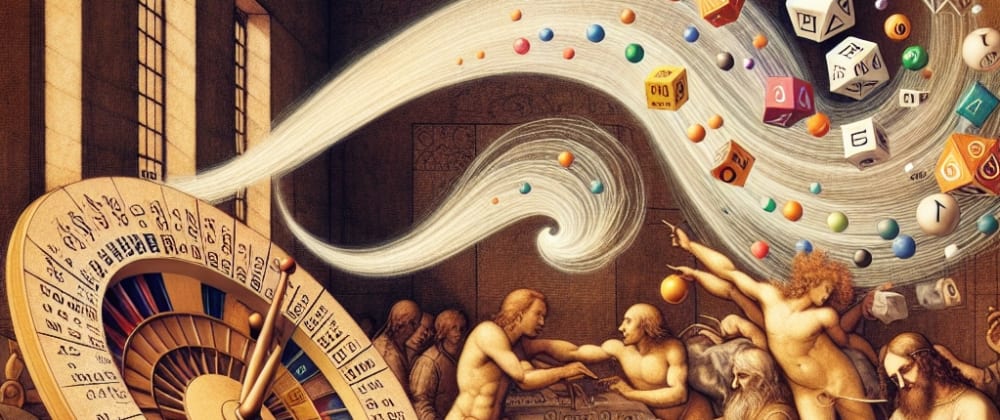Introduction: The Significance of Random Numbers
Random numbers are crucial in various fields, from cryptography to scientific simulations. Their unpredictable nature ensures security in encryption and reliability in statistical methods. However, achieving true randomness is challenging. This article explores the importance of random numbers, the limitations of pseudo-random number generators (PRNGs), and the potential of quantum random number generators (QRNGs).
The Importance of Random Numbers
Random numbers are essential for:
- Cryptography: Creating secure encryption keys
- Monte Carlo Simulations: Providing random inputs for scientific and financial models
- Lotteries and Gaming: Ensuring fairness and unpredictability
Case Study: Press Your Luck Game Show
In the 1980s, Michael Larson exploited the lack of true randomness in the game show "Press Your Luck." By memorizing patterns, he won over $100,000, highlighting the importance of robust random number generation.
Pseudo-Random Number Generators (PRNGs)
PRNGs use deterministic algorithms to generate sequences of numbers that appear random. They require an initial seed and are widely used due to their efficiency. However, PRNGs have inherent limitations:
- Predictability: If the seed is known, the entire sequence can be reproduced
- State Compromise: If the current state is known, future and past outputs can be predicted
- Periodic Repetition: PRNGs eventually repeat their sequences, reducing randomness
Example: Middle-Square Method
The middle-square method is a simple PRNG where a number is squared, and the middle digits are taken as the new number. Despite its simplicity, it suffers from predictability and periodicity.
Quantum Random Number Generators (QRNGs)
QRNGs use the inherent randomness of quantum mechanics to generate true random numbers. They rely on phenomena such as superposition and entanglement, ensuring unpredictability even in principle.
Superposition-Based QRNGs
A qubit prepared in a superposition state yields a random outcome when measured in the computational basis.
Entanglement-Based QRNGs
Entangled states can be used to perform Bell tests. Violations of Bell's inequality confirm the presence of true randomness.
Table: Generating and Testing Entanglement-Based QRNGs
| Step | Description |
|---|---|
| Preparation | Create an entangled state |
| Measurement | Measure each qubit in different bases to gather statistics |
| Bell Test | Perform a Bell test to check for violations of Bell's inequality |
| Random Number Output | If the test confirms a violation, use the measurement results as a source of true random numbers |
Applications of Random Numbers
Cryptography
- One-Time Pads: Require truly random keys to ensure unbreakable encryption
- Digital Signatures: Use random numbers to ensure unique and secure signatures
Monte Carlo Simulations
- Scientific Research: Simulate complex systems in physics, biology, and chemistry
- Financial Modeling: Estimate the behavior of financial markets and assess risk
Tests of Fundamental Physics
- Bell's Inequality Tests: Confirm the non-local nature of quantum mechanics
- Randomness Certification: Ensure the integrity of random number generation
Randomness and Free Will
The concept of randomness also touches on philosophical questions about free will. If certain events are truly random, it challenges deterministic views of the universe and opens discussions on the nature of human decision-making and free will.
Conclusion: The Future of Randomness
Quantum random number generators represent a significant advancement in achieving true randomness. Their applications span cryptography, scientific research, and fundamental physics, providing a robust foundation for future technologies. As we continue to explore and harness the principles of quantum mechanics, QRNGs will play an increasingly vital role in ensuring security and advancing our understanding of the universe.
References
- Bennett, C. H., & Brassard, G. (1984). "Quantum cryptography: Public key distribution and coin tossing." Proceedings of IEEE International Conference on Computers, Systems and Signal Processing, Bangalore, India, pp. 175-179. Available at arXiv.
- Gisin, N., Ribordy, G., Tittel, W., & Zbinden, H. (2002). "Quantum Cryptography." Reviews of Modern Physics.
- Scarani, V., et al. (2009). "The security of practical quantum key distribution." Reviews of Modern Physics.
- Von Neumann, J. "Various Techniques Used in Connection with Random Digits." Monte Carlo Method, National Bureau of Standards Applied Mathematics Series 12 (1951): 36-38.
- Clauser, J. F., Horne, M. A., Shimony, A., & Holt, R. A. (1969). "Proposed experiment to test local hidden-variable theories." Physical Review Letters, 23(15), 880.
By understanding and implementing advanced random number generation techniques, we can ensure secure communications, reliable simulations, and robust tests of quantum principles, paving the way for new discoveries and innovations.







Top comments (0)